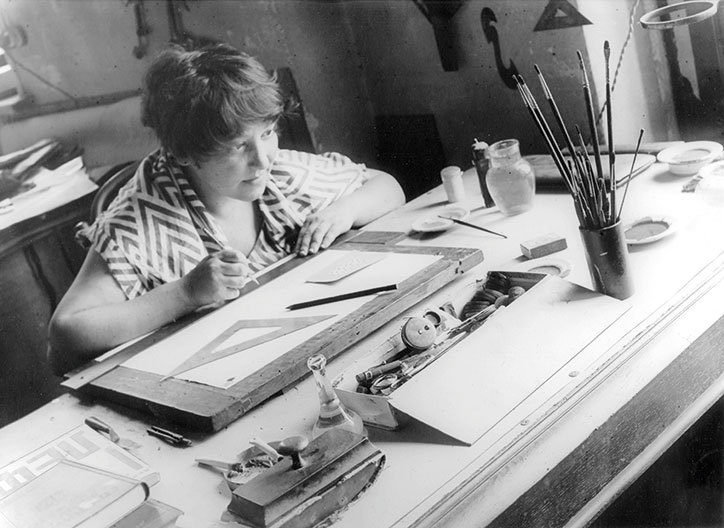Jacob Charles Wilson reflects on the influential figurehead of the Russian avant-garde and often-overlooked pioneer of Constructivism, Varvara Stepanova

The Soviet fashion designer Varvara Stepanova, born to a peasant family in 1894, was one of the greatest creative forces of the revolutionary years. By her 20s, she was already a central part of the Russian avant-garde, alongside the poet Vladimir Mayakovsky, the abstract painter Olga Rozanova and the cutting-edge photographer – also her life partner – Alexander Rodchenko. Her work remains influential today, if under-recognised.
Stepanova was never content for her work to sit in galleries – real artwork was made in the streets, factories and laboratories – and in 1921 she cofounded the Constructivist Group, which set out to direct its artistic efforts towards designing functional yet beautiful products for everyday proletarian life. Stepanova produced photomontages, book covers, posters and theatrical sets, before concluding that her vision would be best realised designing fashion for work and leisure.

The workers of the new world would live and play in the very best materials and designs: casual jumpsuits and overalls that drew on both traditional peasant clothing and the latest modernist artistic trends of futurism and cubism. Stepanova’s designs use dynamic shapes that emphasise the human body in action, with sharp angular forms, printed abstract patterns and contrasting colours: bold reds and blacks. Her clothes would enhance the flexibility and comfort of moving through the streets and the city, in the factory and on to the playing field, while unisex clothing patterns would no longer confine men and women to stifling gender norms.
Before heading the textile design course at the Vkhutemas art school, Stepanova had spent a year working at Tsindel, the state textile factory, producing over 150 designs. Unfortunately, due to wartime shortages and the complexity of her visions, many of these would never be realised, but her work lives on. It is from her pioneering designs and radical reimagining of clothes and the body that our own contemporary approach to sportswear and streetwear has been created: the technologically innovative fabrics and bold use of colour and pattern that dominate Western fashion shows today – having been forged among the passions, ideals and dynamism of the early Soviet years.
This is an excerpt from issue 21 of Port, out now. To buy or subscribe click here.